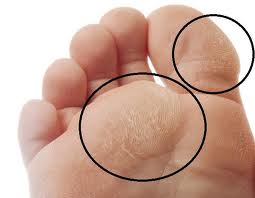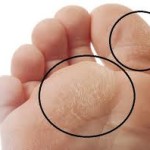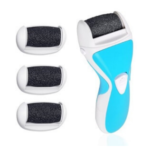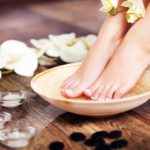Best Way to Get Rid of Dead Skin from Feet in 2018
Dead skin can cause a lot of problems, especially on your feet. It can snag clothing and sheets, develop pain, or create unsightly cracks and calluses. If left unattended, dead skin can build and create problems only a doctor can solve. Good foot hygiene includes more than just clipping and painting your toenails. Taking care of your feet means removing the dead skin before it can become a problem. With all the treatments available in stores, however, it can be difficult to determine the best way to care for your feet.
Quick Reference Corn and Callus Remover Guide
| Category | Product | Description | Rating | Price |
|---|---|---|---|---|
| Best Electric Remover | 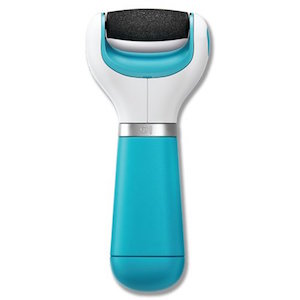 | - Easy to use - Needs 4 AA batteries - The cylindrical head spins 360 degrees |  (5 / 5) (5 / 5) | |
| Best Manual File Scraper | 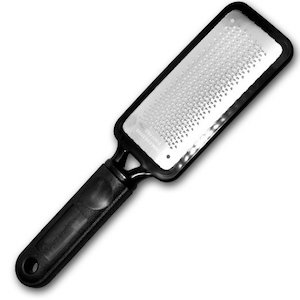 | - Perfect solution for dry, calloused and cracked heels - Large yet light weight design - Gives equally good results on both dry and wet foot surfaces |  (5 / 5) (5 / 5) | |
| Best Callus Gel Remover |  | - Does the work for you - Breaks down calluses in 3-5 minutes - Simply file or buff calluses away |  (5 / 5) (5 / 5) |
Considerations
First of all, you need to figure out exactly how much care your feet need. Evaluate where you are before you continue forward. Examine the following points and see where your feet stand.
- Texture of your feet: Are you dealing with rough skin, dry skin, calluses, or some combination of the three? To get the best results, you need to carefully consider your feet. Using the wrong product can result in pain or substandard results.
- Medical conditions: Do you have diabetes? Do you have other medical conditions that impact your feet? Certain products may not be safe for you to use. If you have diabetes, you may have necrotic tissue in your feet. Diabetics should not use rasps and files, as even the tiniest cuts can become easily infected.
Calluses require special treatments and tougher tools than regular dead skin. If you have hard edges and horns on your feet, you may want to check out one of our other articles on calluses and callus removal. Anyone with diabetes should check with their doctor before aggressively pursuing any kind of foot treatment for dead skin.
How to Remove Dead Skin from Your Feet
Removing dead skin effectively and restoring your soft, natural feet takes more than a single step. With the right tools, however, it’s easy to get rid of unsightly dead skin.
Chemical Peels
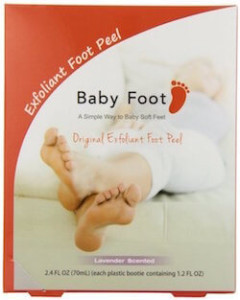
First of all, it’s important to know if you have any allergies to the ingredients in a chemical peel. Although they can be highly effective, they can also cause serious problems for those with delicate or sensitive skin. This makes them unsuited for diabetic buyers as well.
Chemical peels use the magic of science to do the work for you. Rather than trying to rub away dead skin, the peel’s formula sinks into the skin and triggers a sloughing process. The dead skin simply falls away. The effects can be very dramatic.
Read chemical peel instructions carefully. Using chemical peels incorrectly can result in irritation, burns, and sensitivity. Without reading the instructions, you may also miss key information vital to your chemical peel’s performance. You need to know how long the peel should be on your feet, how much should be on your feet, and how to care for your feet after the peel. Depending on your skin, the peel might not remove all your dead skin during the first treatment. Labels provide vital information about how often you can safely apply the peel.
Baby Foot makes some of the best chemical peels in the world. They handle serious dead skin, up to and including mild calluses. Baby Foot simplifies the chemical peel process by putting its formula inside pre-made booties for your feet. This takes a lot of mess out of the application process and eliminates guesswork about how much to apply. Baby Foot’s formula also minimizes the chances of burns and irritations by using seventeen natural extracts to trigger a slough.
Files
 As wonderful as chemical peels may be, they do not work for all feet, and sometimes they leave particularly tough dead skin behind. In order to remove problem spots, simply use a basic file. This file should be safe for shower use and wet skin. Look for pumice and sanding textures instead of the bladed metal files. Nearly all pharmacies and personal grooming stores carry such rasps and files.
As wonderful as chemical peels may be, they do not work for all feet, and sometimes they leave particularly tough dead skin behind. In order to remove problem spots, simply use a basic file. This file should be safe for shower use and wet skin. Look for pumice and sanding textures instead of the bladed metal files. Nearly all pharmacies and personal grooming stores carry such rasps and files.
Although heavy duty files like the Microplane Colossal Pedicure Rasp are the best for removing tough calluses, they don’t pair well with softening agents like peels. The Microplane Colossal Pedicure Rasp is specifically designed to combat tough, dry skin on its own. If you’ve already triggered the first part of a slough, or the hard, dead skin on your feet has softened, then the Microplane Colossal Rasp could do more harm than good. It’s an easy product to overuse, and even users with serious callus problems have removed healthy layers of skin by accident. The results are always painful.
Follow Up
It’s very important to moisturize and protect freshly revealed skin immediately. Finding a good moisturizer and some cotton socks will go a long way in preventing future build ups of dead skin. Lotions and balms with shea butter and/or coconut oil are ideal. Brands like SheaMoisture and Kama Ayurveda both offer excellent products, even though they cater to very different budgets. Whatever your taste and income, there are great options available to help you protect your soft new feet.
Cotton socks provide an extra layer of protection. The material is gentle on your feet and won’t draw out all the moisture you just added. Put them on after moisturizing for best results.
Final Thoughts
Dead skin is always an annoyance, and if it isn’t properly cared for, it can become a serious problem. As with any grooming ritual, however, taking care of dead skin takes more than a single step. Hopefully, you do not have to contend with thick calluses or other particularly tough patches of dead skin. If you do, you should check out one of our other articles that is tailored to callus care and callus products.
Using a chemical peel and some gentle filing will take care of most dead skin problems. It’s important to know what’s in the peel you choose to use, and you should always read instructions and previous buyer feedback to ensure you use it effectively. Foot rasps should be small, flat, and safe for the shower. Last but not least, make sure to moisturize after you remove dead skin. The newly exposed skin will need extra protection. Remember, proper care now can prevent serious issues down the line.

